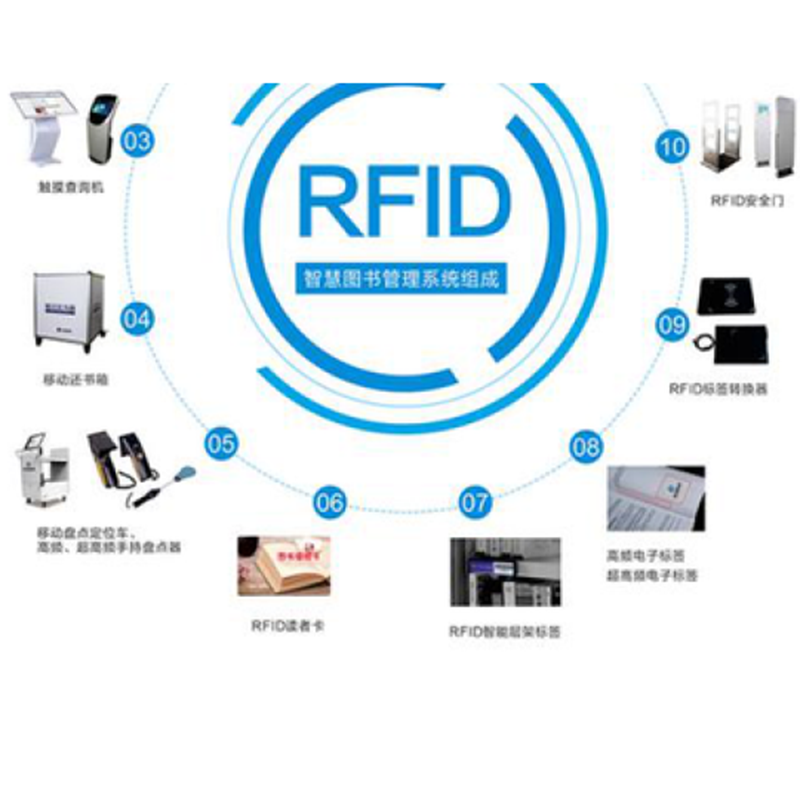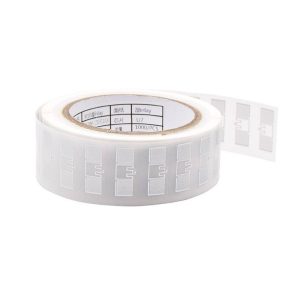RFID electronic tag manufacturers share the application of RFID tags in libraries 123
The application of RFID tags in libraries is faster and more efficient than traditional barcode tags. In the field of library management, RFID systems can update and replace existing traditional barcode technology and security mechanisms, accelerate the automation process of library management, and promote the construction of digital libraries by introducing new hardware platforms.
1. Automated management mode
The RFID system used in the library includes a series of automated management systems such as librarian service system, chip conversion system, self-service borrowing system, self-service book return system, librarian inventory system, communication investigation system, etc.
2. Advanced service model
(1) Self service devices can help readers retrieve information about books, and readers who borrow or return books can also use self-service devices and “one card” to process book borrowing and returning, reducing the time for library staff to intervene.
(2) The self-service query system of the library is a 24-hour service. Convenient to read, books can be borrowed and returned at any time, and electronic books and journals can be easily accessed.
(3) The RFID detection system is stable.
(4) Quick inventory of the library. As long as a handheld reader is used, it can be quickly counted, saving a lot of manpower and material resources, allowing employees more time to provide assistance to readers or add more service content.

RFID electronic tag manufacturers share the application of RFID tags in libraries 123
3. Characteristics of RFID electronic tags:
(1) The data can be modified. Traditional barcode printing exists independently and cannot change data, while electronic labels are not limited by it and can change the data inside an unlimited number of times.
(2) Easy to read data. Traditional barcode readers need to scan barcodes at close range and without obstacles in order to read information; But RFID electronic tags can read information as long as they are within the range of radio waves.
(3) Large data storage capacity. The storage capacity of traditional barcodes is about 50 bytes, while that of QR codes is about 2000-3000 bytes. However, the maximum storage capacity of RFID electronic tags is several megabytes.
(4) Reusable. Traditional barcodes are disposable, while RFID electronic tags can be reused indefinitely.
(5) Fast scanning speed. Traditional barcodes can only read data from a single barcode, while RFID electronic tags can read data from multiple tags simultaneously.
(6) High security. RFID electronic tags can be protected with passwords, and highly secure protection measures are not easy to counterfeit.
(7) Durability. Traditional barcodes are difficult to recognize due to their long usage time or wear and tear. RFID electronic tags have the characteristic of being reused hundreds of thousands or even millions of times, and their materials can also be placed in harsh environments, making them more durable for users.
(8) Volume is not limited. Traditional barcodes are limited by their size and are difficult to use on smaller items. RFID electronic tags are not limited by size and can be hidden inside smaller items.
RFID electronic tag manufacturers share the application of RFID tags in libraries 123
The application of RFID tags in libraries is faster and more efficient than traditional barcode tags, and can greatly reduce manpower and material resources, save operating costs. This form of library can be called an RFID intelligent library. Donglai Electronic IoT has certain advantages in the use of RFID electronic tags and product production, with superior product quality and meticulous pre-sales and after-sales service to help you solve problems.






